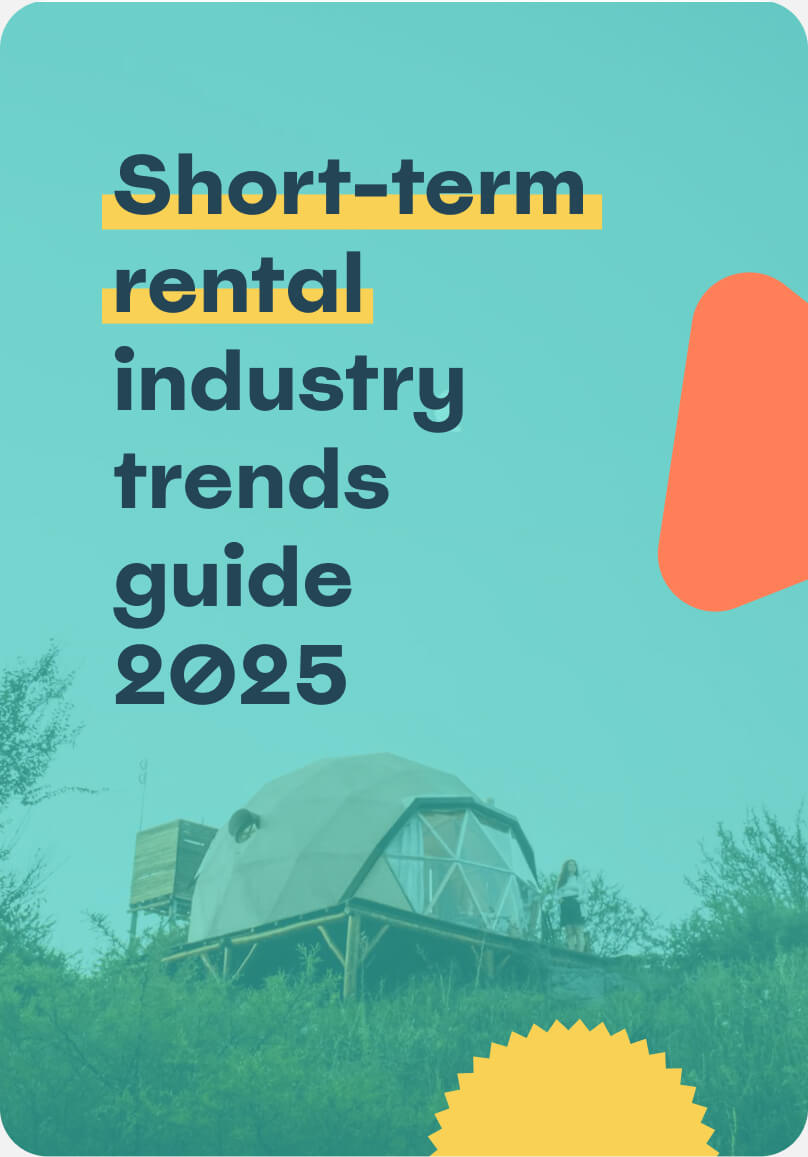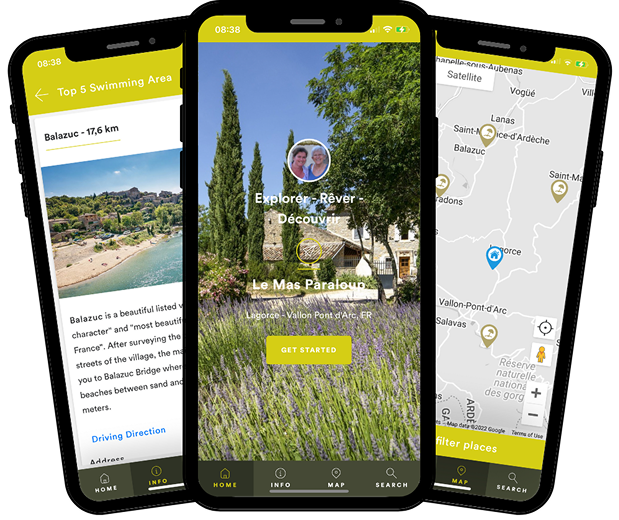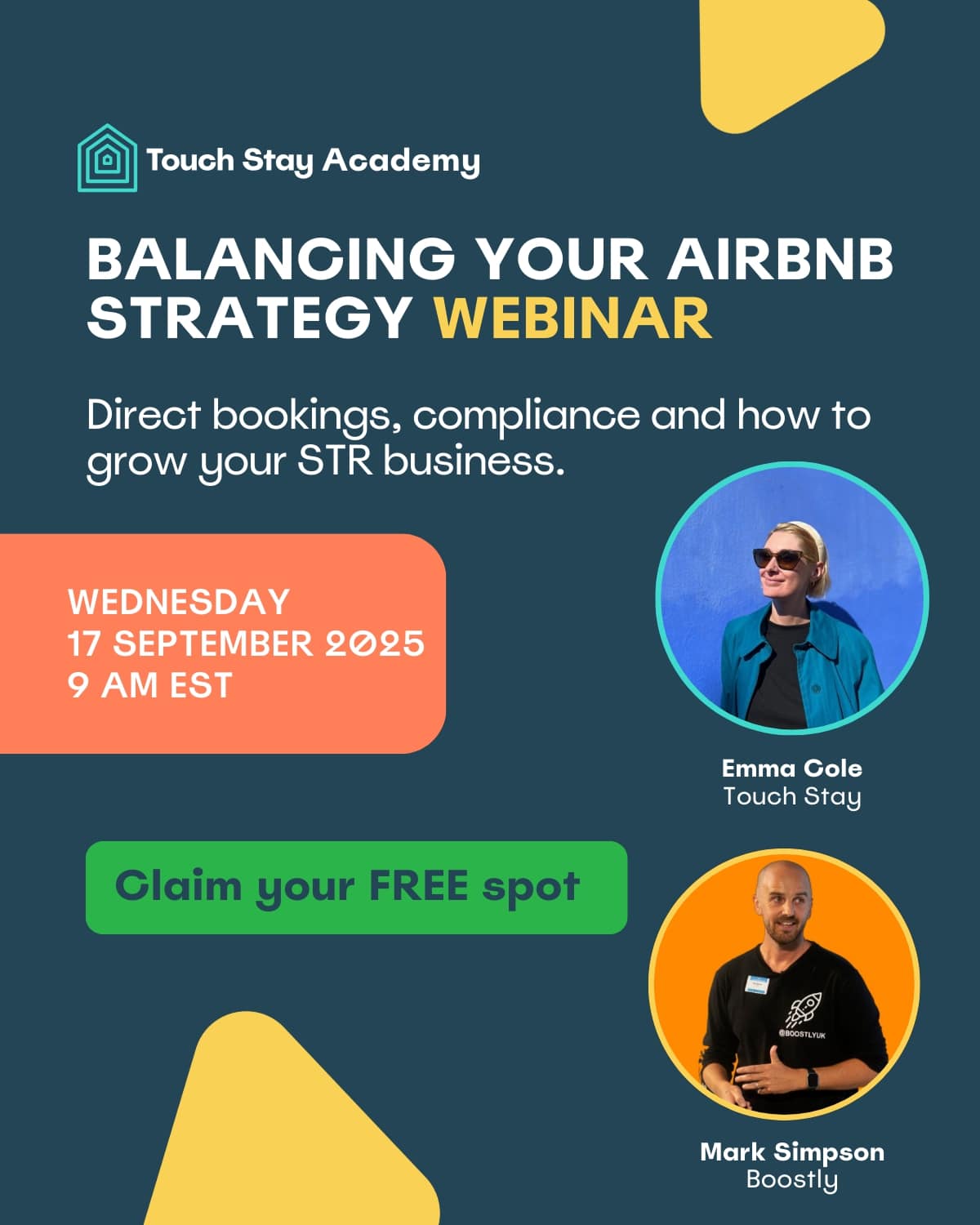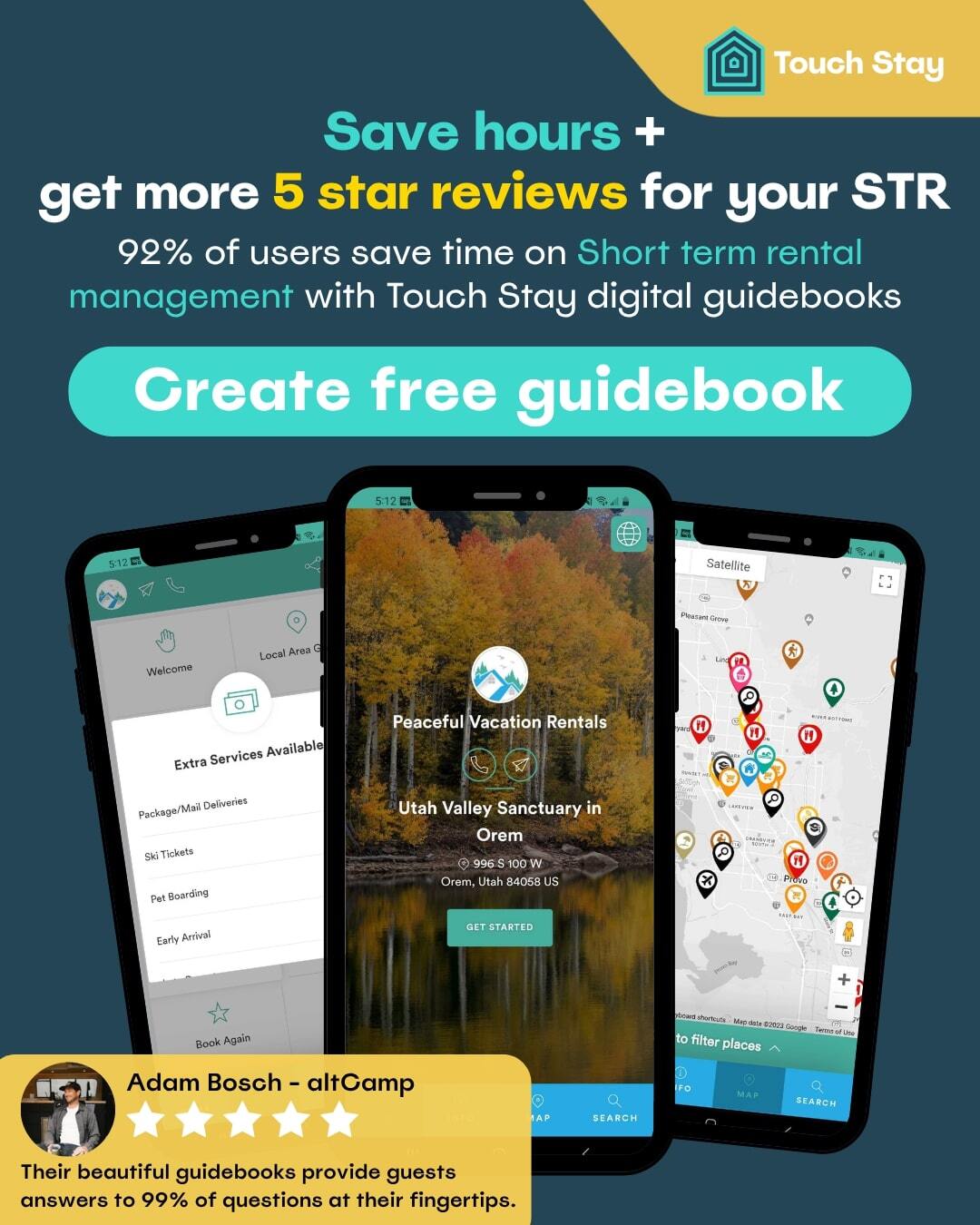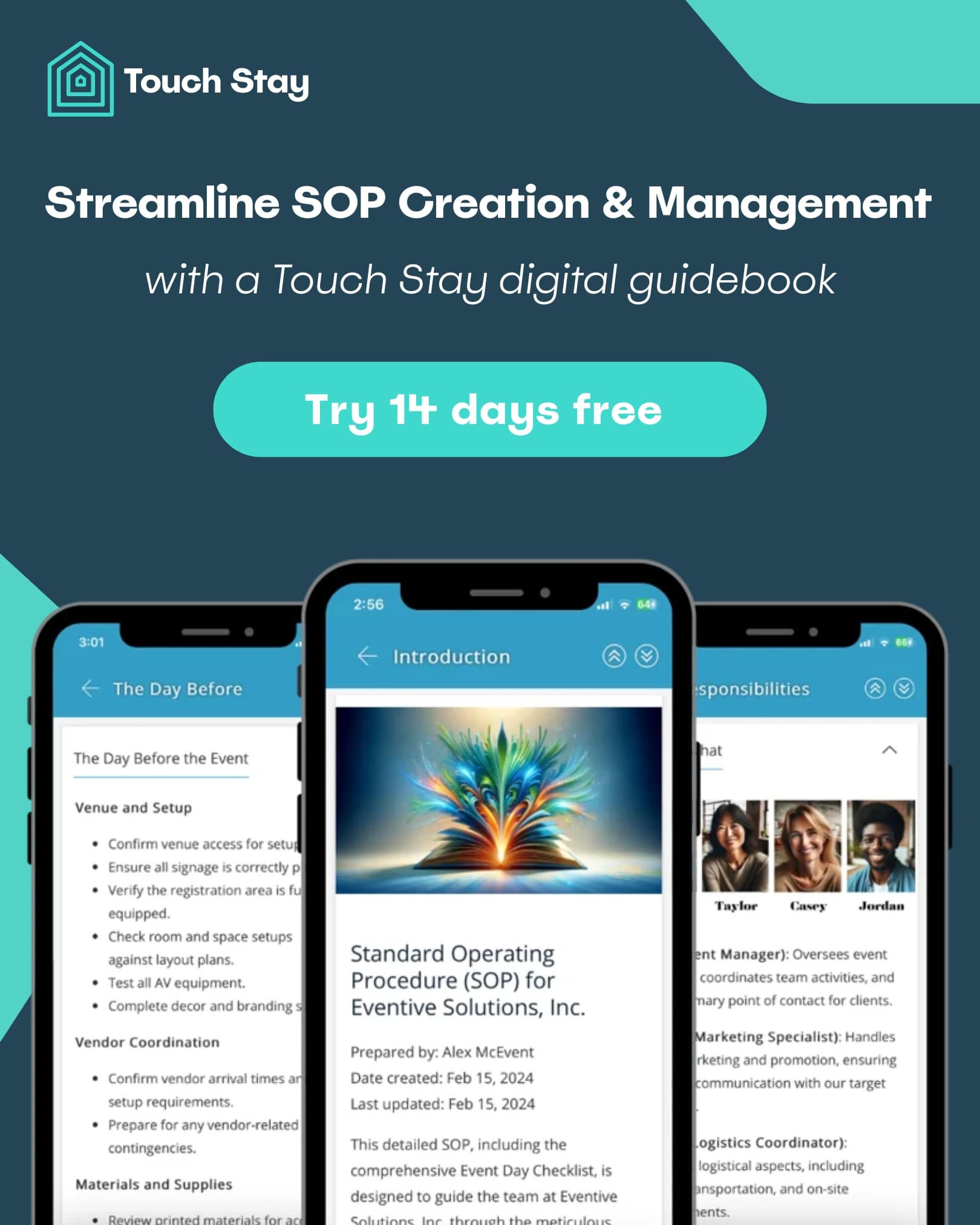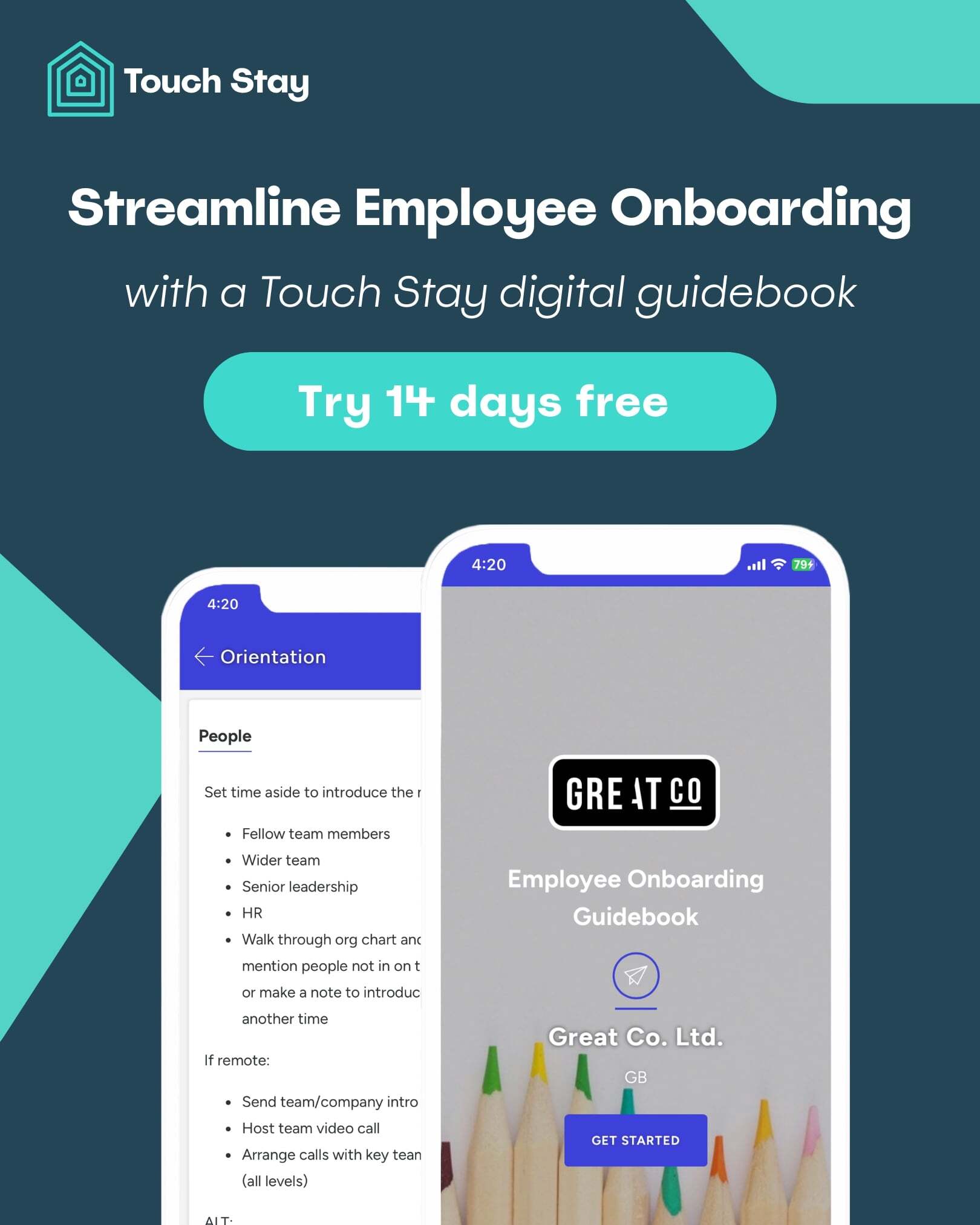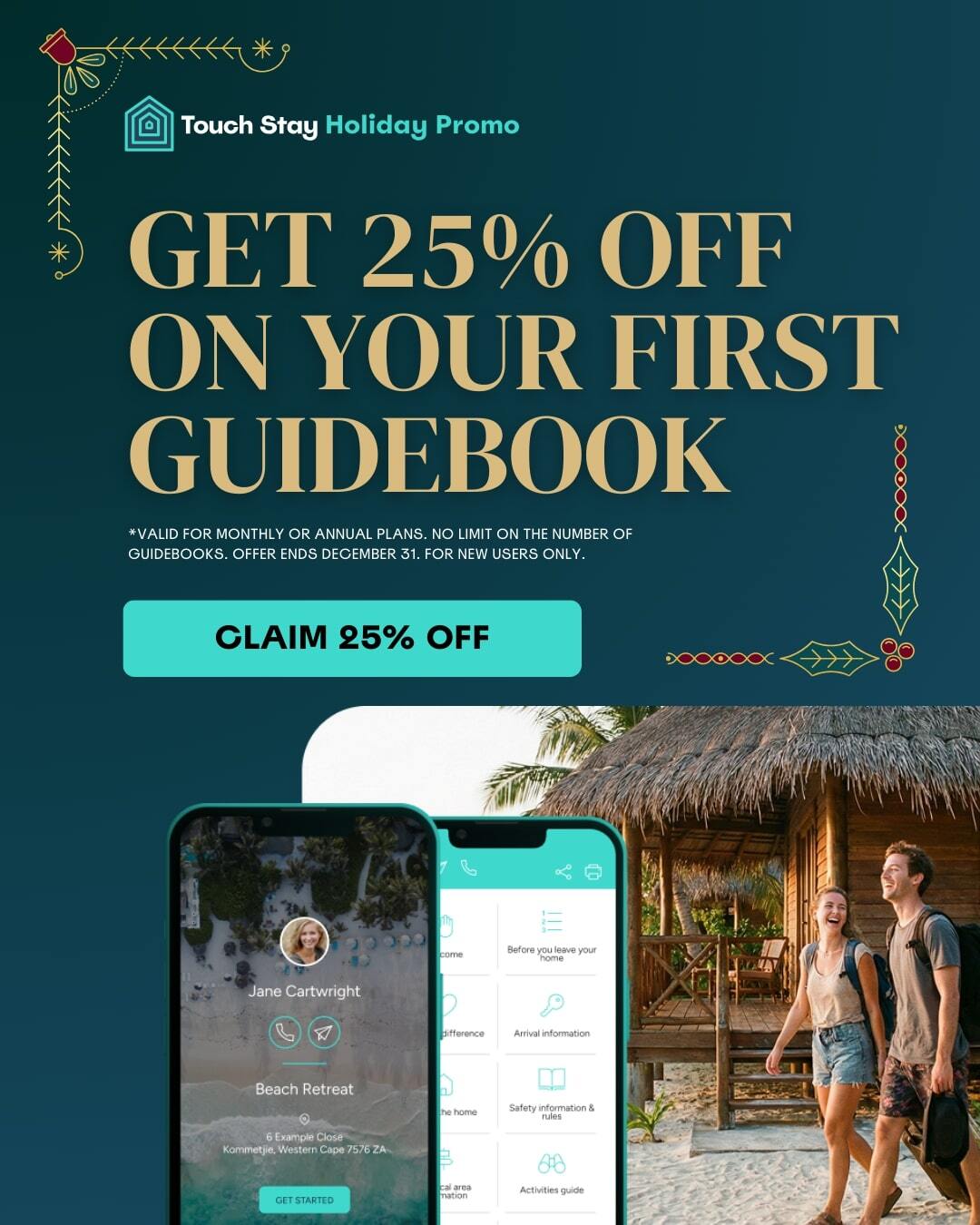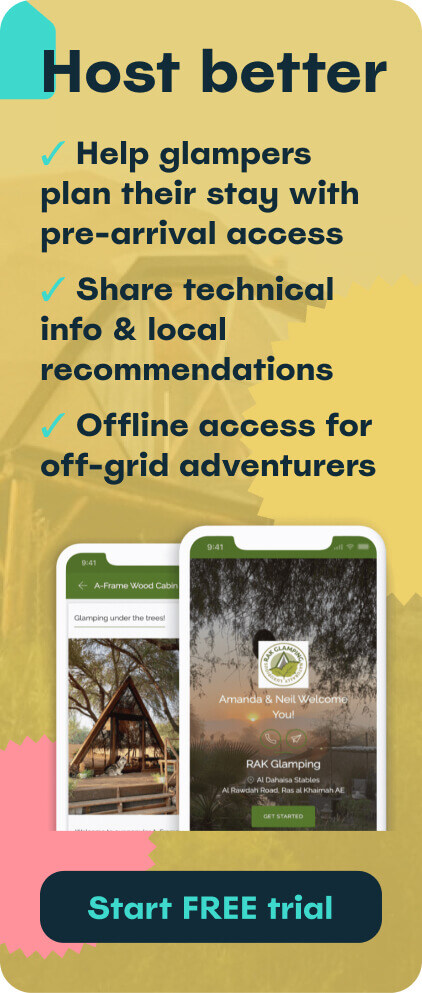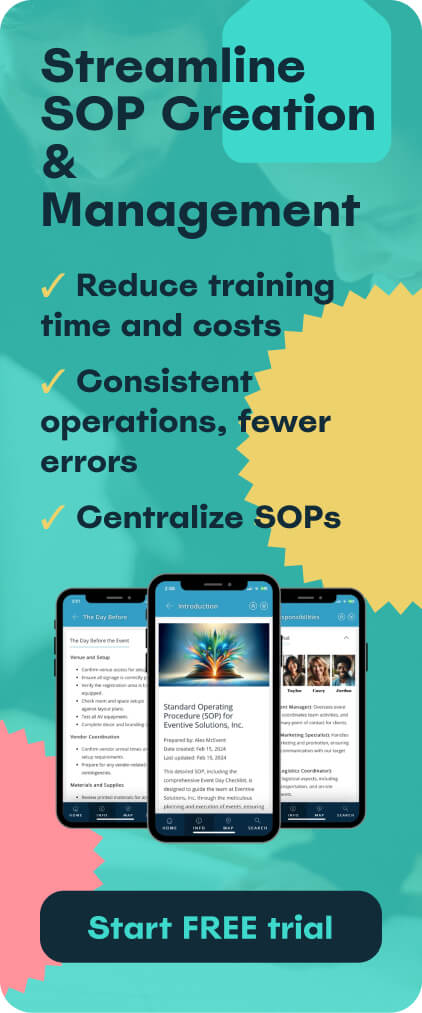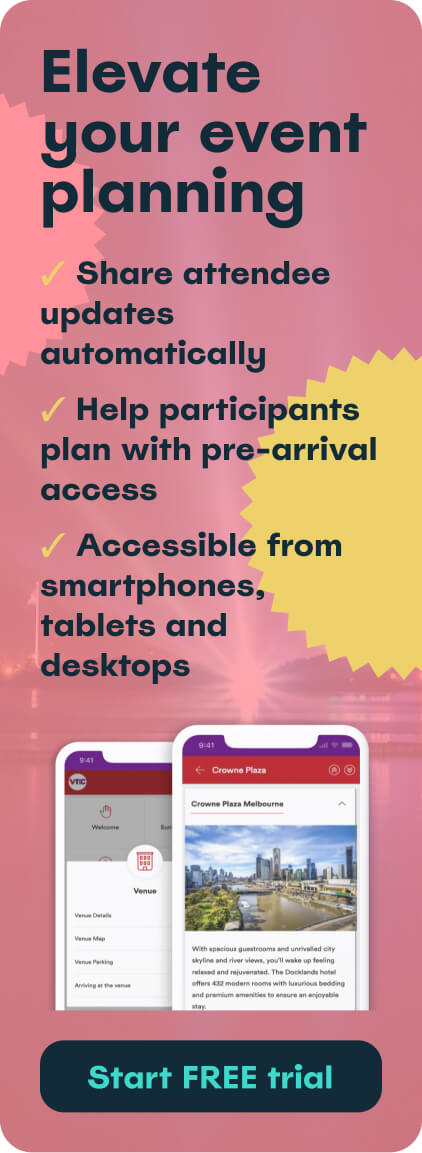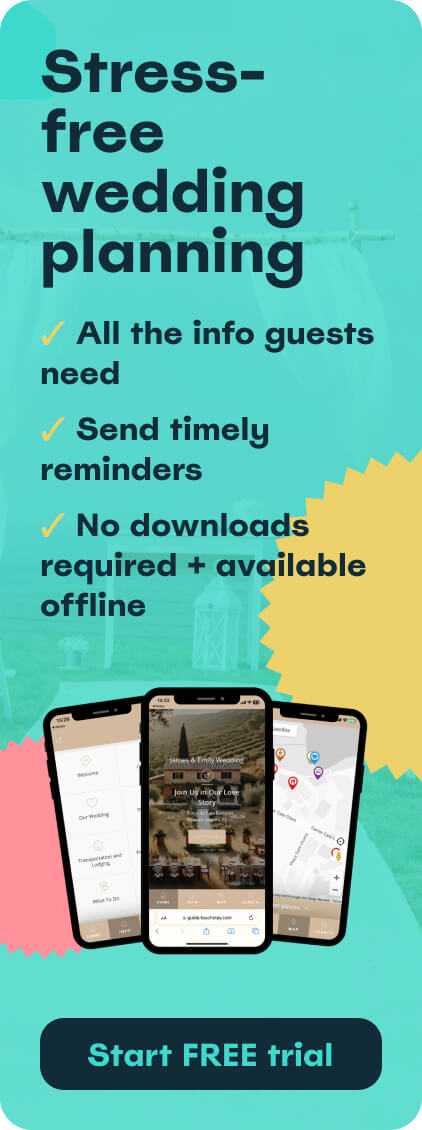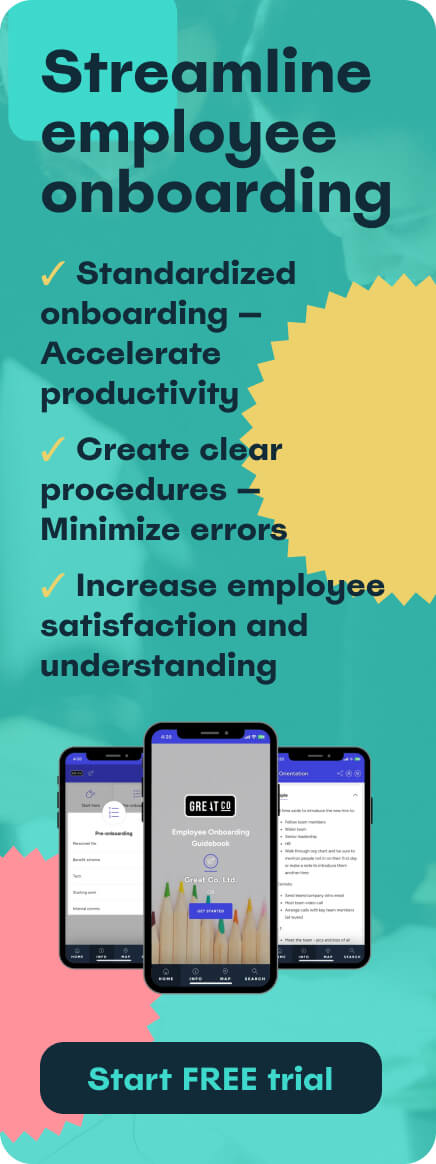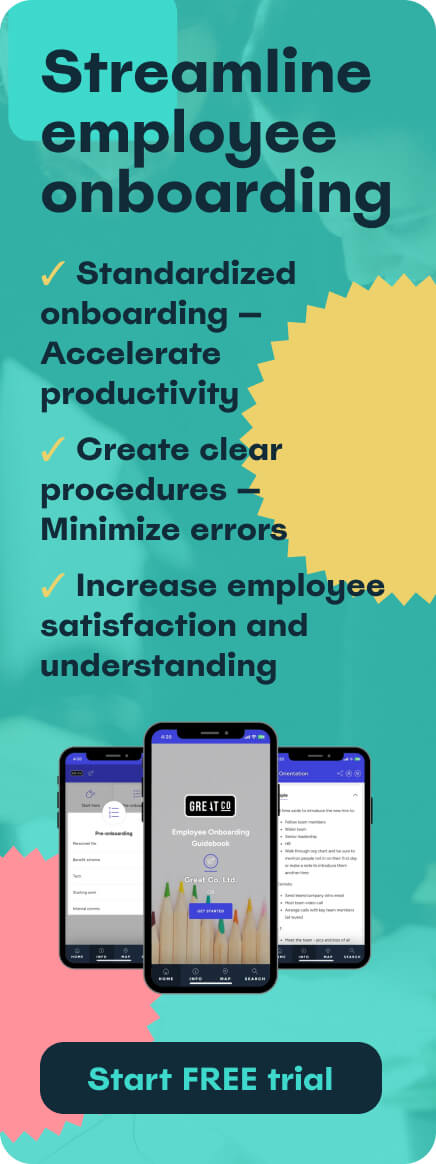Career fairs can be a fantastic method of recruitment. They’re a great way to meet potential candidates face-to-face and an opportunity to establish your company as a desirable place to work, which can benefit your recruitment efforts well into the future.
If you’re wondering what to bring to a career fair as a recruiter, a classic option you’ll find on a lot of job fair checklists is a brochure advertising your company and the opportunities available. Crafting a career fair brochure can seem like a daunting and time-consuming task, but it’s one of the most valuable job fair materials you can bring to these events, so it is well worth the effort.
In this article, we share a step-by-step guide to creating the best career fair brochure, as well as the benefits of these and how you can utilise a digital format to maximise your reach.
- The benefits of creating career fair brochures
- Decide your career fair brochure audience
- What to include in a career fair brochure
- Digital career fair brochure templates
- How to promote a career fair program
The benefits of creating career fair brochures
Before we dive into what to include in a career fair brochure, here are some of the benefits of creating this resource.
Employer brand image
Firstly, a career fair brochure is a fantastic way to establish a memorable employer brand image for your company. Instead of just trying to make a fleeting impression with your stand or by talking to a handful of attendees, you can distribute copies of your brochure which gives a comprehensive summary of what it’s like to have a career with your organisation.
Brochures are also a good way to cement a recognisable brand image because they are so visual. Not only can you capture a specific tone of voice, but you can use a lot of branded colours, graphics and images to create a unique and memorable impression.
Information retention
Being able to share a career fair brochure with potential candidates is also a benefit because it massively increases the amount of information they’ll be able to retain about your company.
Career fair attendees will likely speak to a lot of different organisations, decreasing the likelihood of remembering everything you share with them even if you do make a good impression! By sharing a brochure with them, you make sure that they have all of the key information about your company to refer back to, helping to strengthen their memory of what they spoke to you about.
Wider engagement
If you don’t bring any kind of flyer or brochure to a career fair, your main approach for connecting with attendees is speaking to them. No matter how efficient or charming you are, this does limit the number of people that you’ll be able to engage with during the event.
By sharing brochures, either with physical or digital copies, you majorly increase the number of people whom you’ll be able to share information about your company with. You might not be able to speak with everyone, but you can hand out brochures and increase engagement levels this way.
Decide your career fair brochure audience
Before we launch into sharing suggestions for what to include in a career fair brochure, you’ve got to make sure that you’ve decided on your audience. The most effective job fair materials aren’t created in the hope that they’ll appeal to everyone, but so that they’ll engage a specific group of ideal candidates who will be the best fit for your company. If you want to maximise the impact of your brochure, you should create it with a target audience in mind.
You might already have a clear idea of your ideal candidates, whether through other recruitment approaches or as part of your job fair recruitment strategy. If you don’t have a target candidate, or several ideal candidates, take some time to think about the key traits of these people. What demographic do they belong to, what opportunities are they looking for, and what interests them?
When it comes to tailoring your career fair brochure, focus on this ideal candidate and consider what they’re looking for from an employer and what kinds of messaging or imagery they’re going to respond to. Highlight the benefits of your employee experience based on their expectations, talk about projects and opportunities they’re going to be interested in, and even use photos of current employees that they’re likely to relate to most.
When you tailor your career fair brochure to your ideal candidates, it may feel like you’re narrowing your potential talent pool. But in terms of your likelihood of success, creating targeted job fair handouts increases your likelihood of actually engaging the attendees you interact with and therefore increases their likelihood of applying for a job.
What to include in a career fair brochure
Now that you know who your career fair brochure is going to be designed for, you need to get a head start on actually creating it. Here’s a rundown of the most important things to include.
Introduction to your company
Anyone who’s taken career fair handouts like a brochure from you should have a rough idea of your company and what you do. But a proper introduction should be the first thing in your brochure to give potential employees the whole story.
This is a great opportunity to explain the ideas behind the organisation and how it has grown into the business it is today. As the first section of a career fair brochure, it needs to grab the reader’s attention, so starting with a personal story, maybe written in the voice of your founder, is a great way to do this.
Keep it short but engaging; summarise what it is you do and why you do it, and give an overview of what the company looks like at this moment in time.
Values and mission
After you’ve given an introduction to your company, the next thing that is going to engage the right kind of reader is information about your company's values and mission. This is one of the most important parts of your brochure because it can help potential candidates identify whether they’re the right person for your business, which in turn can improve the quality of your job applicants.
Don’t just list your company values; illustrate how your employees put them into action or what they mean for the way that you operate as a business. You want to make clear the kinds of values that you’re looking for in potential employees, which will hopefully encourage the right readers to pursue applying for a job.
Alongside your values, you should also list a mission statement or any other guiding principles. This serves a similar purpose; it clarifies the kind of business you are and should resonate with the right kinds of candidates.
Departments and career opportunities
In this section of your career fair brochure, you should give an overview of the kind of job opportunities available in your company. It can be easiest to divide these by department, as this also makes it easier for potential candidates to easily identify whether they have the right skills, experience or interests to work for your company.
You don’t need to list the specific roles that might be available; that’s what your website is for. But you should share a description of what each department works on, the kinds of roles and responsibilities within this area, and highlight any particularly exciting projects or opportunities.
If you’ve created a digital career brochure, this is a great section to include links to more detailed information on your website, or even available job vacancies in the departments you’ve mentioned.
Employee testimonials
Employee testimonials are another of the most important things you should include in any of your job fair materials. These should give an accurate statement of the employee experience at your organisation, which can be the difference between a potential candidate wanting to work for you or not.
The size of your brochure will depend on the number of testimonials you can feature, so this is another really useful section to have additional links in if you’re hosting your brochure online. You should include images of the employees who have given the testimonials where possible, as this adds personality and makes the quote feel more believable. If you’re producing a digital brochure, consider whether you could include video testimonials here to create even more engaging content.
Application advice
Once you’ve shared the necessary information about your business, the next thing you should share in a career brochure is advice for readers who are considering applying for a role. Give suggestions for what helps an application to stand out, highlight any necessary skills that you’re always looking out for, and direct the reader to your website to find contact details or links to live applications.
Another useful thing to include in this section is an overview of your recruitment process. When candidates understand what is involved in a job application from the start they’re much more likely to stay engaged, so share information about the different application stages and interviews, along with estimated time frames for how long each stage might take.
Contact details
Finally, make sure to share all of the necessary contact information for your company at the end of your brochure with directions as to who the reader should go to with different types of queries. You can also share your usernames or even QR codes that take the reader to any social media accounts you have to encourage more engagement on other platforms.
Digital career fair brochure templates
All of the advice that we’ve given in this article can be applied to either physical or digital career fair brochures. But we wanted to dedicate this section of the guide to digital copies because there are specific considerations that you’ll have to deal with during the design process.
Unless you’re a total whizz at design, you’ll probably benefit from using a template to create your digital brochure. You’ll probably also use a template even if you’re planning on printing your brochures, but when you’re creating a digital brochure this template may include interactive elements that can improve engagement. Utilising links is a great example of this, or embedding short videos that offer information in a different format.
A range of different free and paid templates are available that can help give you a structure and a format for your brochure. Whilst choosing a template with an eye-catching design can be really beneficial, remember that your brochure should include a lot of unique branding related to your company, so don’t get too comfortable with the design elements already there.
When you’re creating your career fair handouts, you might also end up using software that offers different templates. Platforms like Touch Stay can be brilliant for crafting career fair brochures because they host the finished product and mean that you can continuously update the content without having to reprint or re-upload your brochure.
Before choosing a template or software, make a list of the key features you want your brochure to have. Also consider your skill level and how much design work you’re willing to do yourself, as this will influence the kind of software or complexity of template that you end up using.
How to promote a career fair program
The main way that you’ll be promoting your career fair brochure is by sharing it with attendees at a job fair or recruitment event. You should hand these out to the people you talk to and also have them available on your stand or elsewhere in the building so that other attendees can pick them up and read them.
If you create a digital copy of your career brochure, you open up a lot of other avenues for sharing this resource. From a career fair perspective, you could have a QR code displayed on your stand encouraging attendees to scan it to view the digital version, which removes the potential issue of running out of brochures during the event, and is more environmentally friendly!
You can also link this career brochure on your website as part of your recruitment efforts, allowing web users to engage with the content when they’re browsing your content. This link can also be shared on social media or with your email list, especially if you collect attendee emails at the job fair and follow up with them afterwards.
When you use a career fair brochure template to create a digital version, your options for sharing this brochure and increasing its impact grow significantly. It’s useful to have physical copies at in-person events, but when you have a digital copy created with software like Touch Stay, you open up a lot more avenues for sharing it with a wider audience.
Summary
Career fairs can be an incredibly useful approach to recruitment as long as you come prepared with the right materials and a clear idea of the kinds of candidates that you’re trying to attract. Whether you create a physical copy of a brochure or decide to make a digital one with software like Touch Stay, it’s a great way to share key information about your business and outline what you’re looking for from an ideal candidate.
If you’re thinking about creating a digital career fair brochure for your business, Touch Stay offers a fantastic platform to create digital guidebooks that are easy to personalise to suit your brand. Start your free trial now to see how you can create a career fair brochure that will have a brilliant impact on your recruitment efforts.

Ned
Ned has clocked up over 11 years in digital marketing and comms, with a strong focus on creating engaging content for a range of brands and agencies. When he’s not writing, he can be found digging for records, peering through his telescope at the night sky, or onboard his local lifeboat where he volunteers as a crewmember.
Be the first to know!
Join our newsletter for early access to:
- ✅ Free guides
- ✅ Pro tips & tricks
- ✅ Time saving tutorials
- ✅ Latest blog posts
- ✅ Checklists & templates
